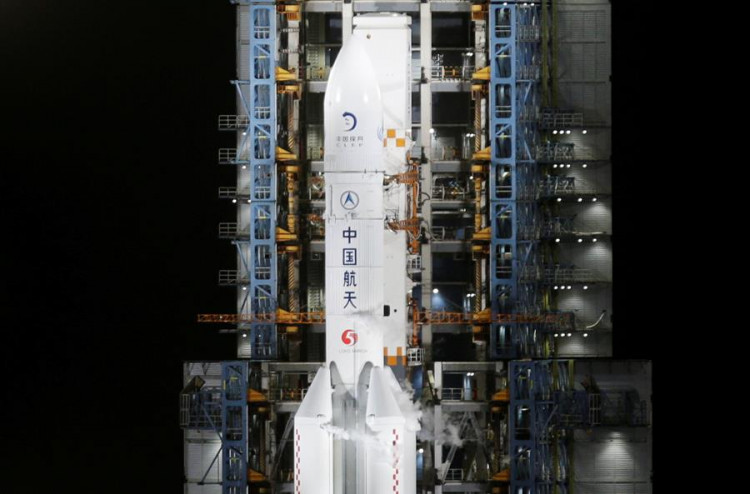Pieces of China's largest rocket fell in the Indian Ocean on Sunday, with most of its core segments burned up upon re-entry into the atmosphere, ending days of speculation over where the metal parts would plunge but drawing criticism from the United States over lack of transparency.
"The vast majority of items were burned beyond recognition during the re-entry process," China's official Xinhua News Agency said. But despite that, NASA Administrator Sen. Bill Nelson said it was clear China is "failing to meet responsible standards regarding their space debris."
The nearly 100-foot tall Long March 5B rocket blasted off from China's Hainan Island at the end of April. It's part of a series of missions that will transport equipment or personnel from Earth to space, in order to build a permanent Chinese space station by 2022, according to Reuters.
The U.S. Space Command confirmed the Chinese rocket's re-entry over the Arabian Peninsula, but said it was not clear if the debris fell on water or land. "The exact location of the impact and the span of debris... will not be released by U.S. Space Command," it said in a statement.
Jonathan McDowell, a Harvard-based astrophysicist, told Reuters that the potential debris region could have stretched as far north as New York, Beijing or even Madrid, and as far south as southern Chile and New Zealand.
The Tiangong-1, China's first space station, plummeted into the Pacific Ocean in 2016 after the country confirmed it had lost control. Three years later, Chinese space engineers controlled the demolition of its second station, the Tiangong-2, in the atmosphere.
Meanwhile, The Global Times, a Chinese tabloid, dismissed as "Western hype" worries the rocket was falling "out of control" and could cause major damage to humans and property.






